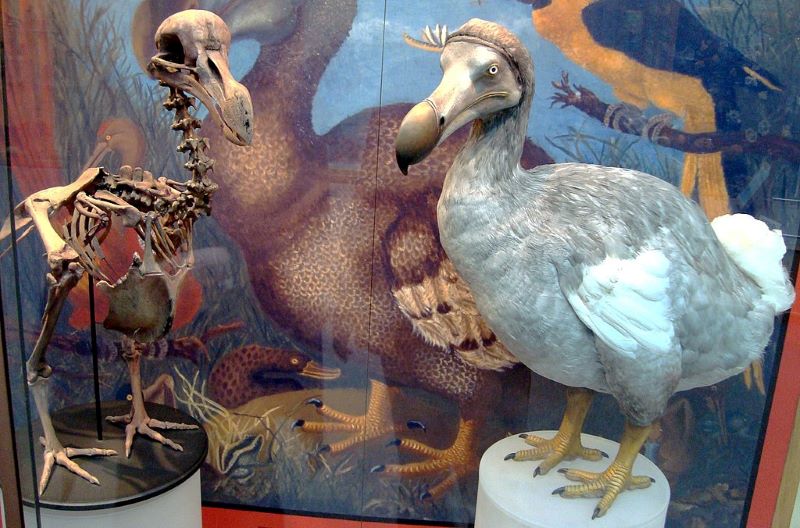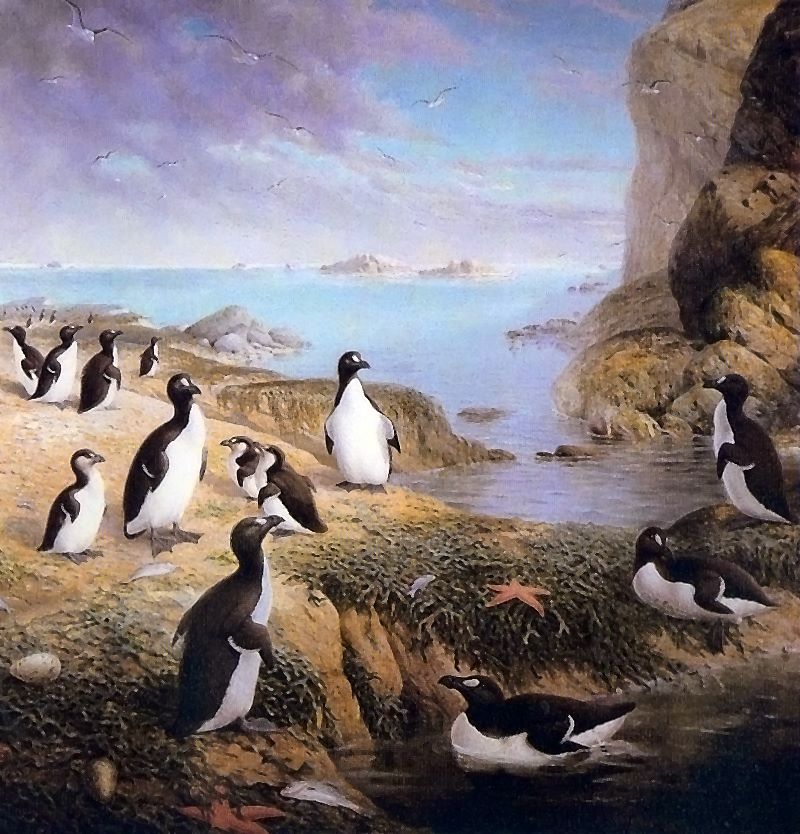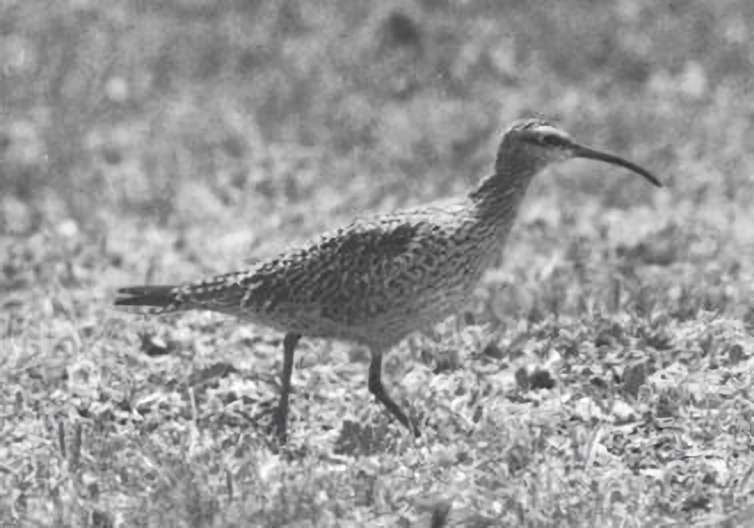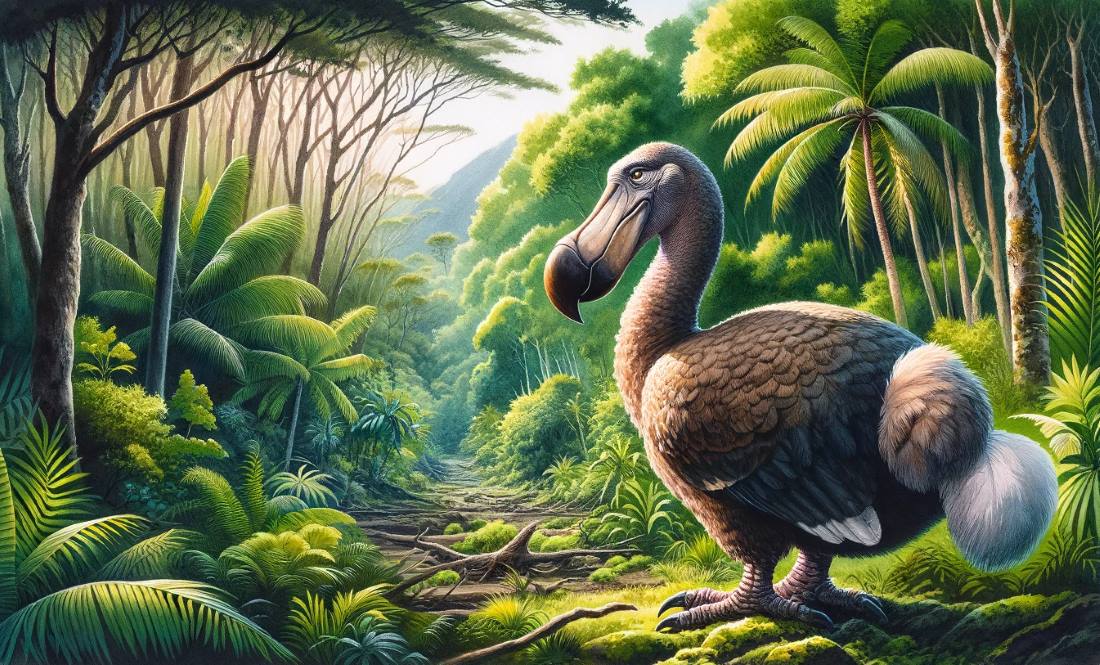Human Impact on Bird Extinction has become a critical issue in the contemporary era. Human civilization, with its rapid expansion and often reckless practices, has been directly responsible for the extinction of numerous animal species, particularly birds. Our irresponsible behaviors and environmental mismanagement have not only erased many species from existence but continue to threaten the survival of numerous others. In this blog post, we will focus specifically on several well-known bird species that have vanished in the last few centuries, highlighting the profound and often irreversible impacts of human actions on these creatures. This exploration serves as a stark reminder of the consequences of our interactions with the natural world.
Dodo
The Dodo, undoubtedly, stands as one of the most renowned species to have gone extinct due to human actions, becoming a symbol of the tragic consequences of human impact on wildlife. This bird, native to Mauritius, was a unique creature, known for its distinctive appearance and characteristics. It had a large, bulbous body, a stout, hooked beak, and short, stubby wings, rendering it flightless. The Dodo led a life largely devoid of natural predators, a factor that contributed to its trusting nature. It nested on the ground and was known to lay only one egg at a time, a trait that made its reproductive process particularly vulnerable.

The tragic fate of the Dodo began with the arrival of humans in Mauritius. Unaccustomed to predators, these birds were naive and easy targets for sailors and settlers who began to colonize the island in the late 16th century. The Dodo’s lack of fear, combined with its inability to fly, made it particularly susceptible to hunting. In addition to direct hunting, human settlement led to the destruction of their natural habitat and the introduction of other animals such as pigs and rats, which raided Dodo nests. This combination of factors led to the rapid and irreversible extinction of the Dodo, with the last recorded sighting in the late 17th century, turning it into an enduring emblem of human-induced extinction.
Guadalupe Caracara
The Guadalupe Caracara, another poignant example of a species lost to human activities, was once a thriving raptor native to Guadalupe Island, Mexico. Known for its striking appearance, this bird of prey possessed a robust build, dark plumage, and a distinctive facial shield that gave it a formidable look. Adapted to a varied diet, it showcased remarkable versatility in its hunting and scavenging habits. The Guadalupe Caracara, like many island species, evolved in an environment free from major predators, leading to a certain level of fearlessness and vulnerability in the face of new threats.

The demise of the Guadalupe Caracara was a direct consequence of human interference. Contact with humans began in the 19th century when sailors and settlers visited the island. These humans perceived the caracara as a threat to livestock and as a convenient source of food, leading to rampant hunting. Additionally, the introduction of non-native species like goats severely altered the island’s ecosystem, disrupting the caracara’s food sources and nesting grounds. The combination of direct persecution and habitat destruction proved catastrophic. By the early 20th century, the Guadalupe Caracara was extinct, leaving behind a legacy that starkly illustrates the impact of human encroachment on wildlife.
Great Auk
The Great Auk, a symbol of the profound impact of human activities on the natural world, was a large, flightless seabird that once thrived in the North Atlantic, from North America to Northern Europe. Characterized by its black and white plumage, tall stature, and large beak, the Great Auk was an impressive sight. Adapted for life in water, it was an excellent swimmer, using its powerful wings to propel itself underwater. On land, however, it was clumsy and vulnerable, nesting on rocky, isolated islands where it laid a single egg each breeding season.

Tragically, the arrival of humans marked the beginning of the end for the Great Auk. Coveted for its feathers, meat, and oil, the bird became a prime target for massive commercial exploitation in the 18th and 19th centuries. Sailors and fishermen hunted them in large numbers, exploiting their inability to fly and their predictable breeding locations. The demand for their down, used in pillows and mattresses, further accelerated their demise. By the mid-19th century, the Great Auk was extinct, its last known specimens were killed off in 1844. The loss of the Great Auk is a stark reminder of the fragility of species and the devastating effects of unchecked human exploitation of natural resources.
Eskimo Curlew
The Eskimo Curlew, once a familiar sight across the vast landscapes of North America, stands as a poignant testament to the consequences of human impact on migratory bird species. This small, brownish curlew, known for its long, slender bill and cryptic plumage, was celebrated for its remarkable long-distance migrations. It bred in the Arctic tundra of Canada and Alaska and wintered in the southern plains of Argentina, making one of the longest migratory journeys of any bird species. The Eskimo Curlew was also noted for its distinctive, mournful call, a sound that once heralded the changing seasons across the American plains.

However, the fate of the Eskimo Curlew was dramatically altered by human actions. Intensive hunting in the late 19th and early 20th centuries, particularly during their migration through the central United States, decimated their populations. These birds, once numbering in the millions, were hunted for sport and food, falling victim to the same market hunting pressures that had previously endangered other bird species like the Passenger Pigeon. Habitat destruction, both on their breeding and wintering grounds, further exacerbated their decline. By the mid-20th century, the Eskimo Curlew had become extremely rare, leading to its current status as critically endangered or possibly extinct. The story of the Eskimo Curlew serves as a stark reminder of the fragile balance between migratory species and their environment, and how quickly human activities can disrupt and destroy it.
Conclusion
This list of vanished birds, featuring the Dodo, Guadalupe Caracara, Great Auk, and Eskimo Curlew, is by no means exhaustive. Numerous other species such as the Passenger Pigeon, Carolina Parakeet, and the Hawaiian Honeycreepers have also succumbed to similar fates. These losses underscore a profound truth: human actions have irreversible impacts on the natural world. It is our responsibility to safeguard the remaining species we have inherited for future generations.
Preserving biodiversity is not just a moral obligation but a necessity for maintaining the delicate balance of our ecosystems. The extinction of each bird species is a loss to our natural heritage, a disruption in the intricate web of life that sustains us all. As we move forward, we must learn from these past mistakes and commit to a future where the conservation of wildlife is a priority, ensuring the survival of the rich tapestry of life on our planet.
Inspiration for this text was drawn from the insightful book “EXTINCT ANIMALS: An Encyclopedia of Species That Have Disappeared during Human History” by Ross Piper, with illustrations by Renata Cunha and Phil Miller. This comprehensive work offers a deep dive into the stories of species lost to time, emphasizing the profound impact human actions have on the natural world. We highly recommend this book to anyone interested in understanding the delicate balance of our ecosystem and the legacy of extinct species.
Historical Challenge: Can You Conquer the Past?
Answer more than 18 questions correctly, and you will win a copy of History Chronicles Magazine Vol 1! Take our interactive history quiz now and put your knowledge to the test!

